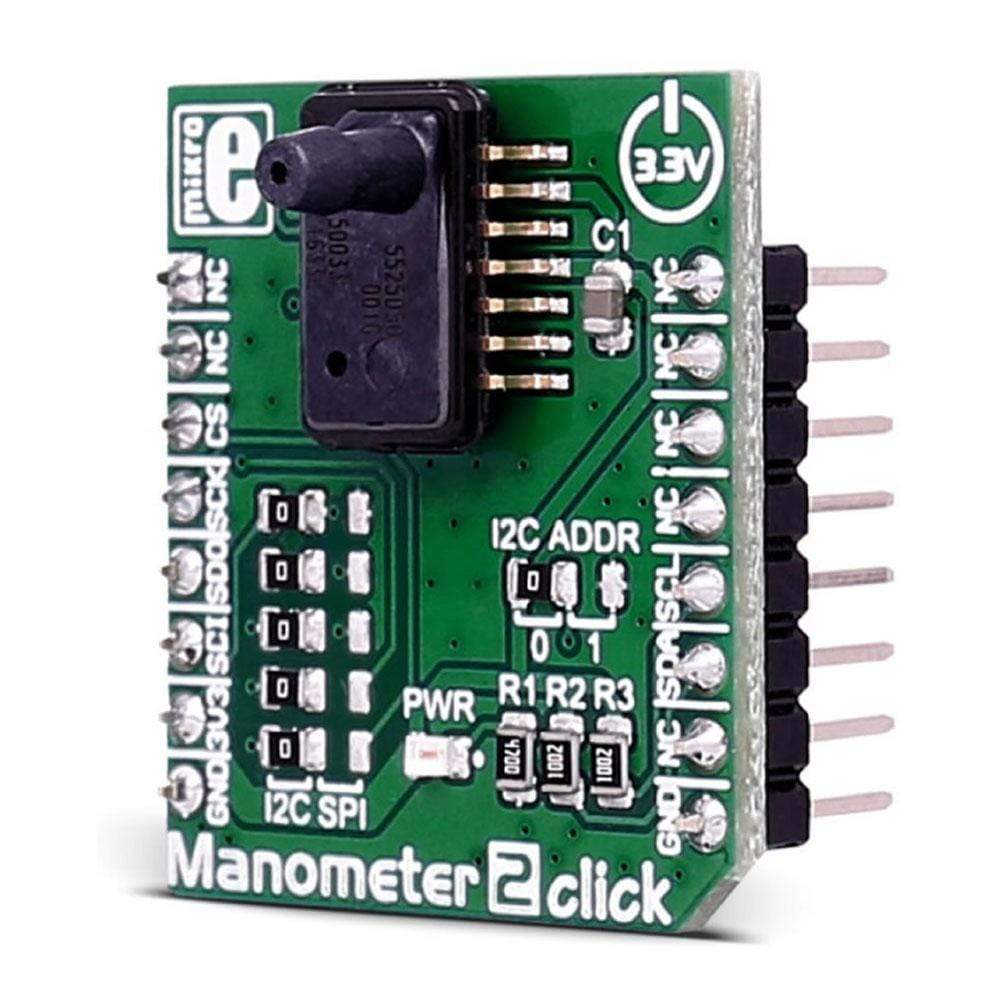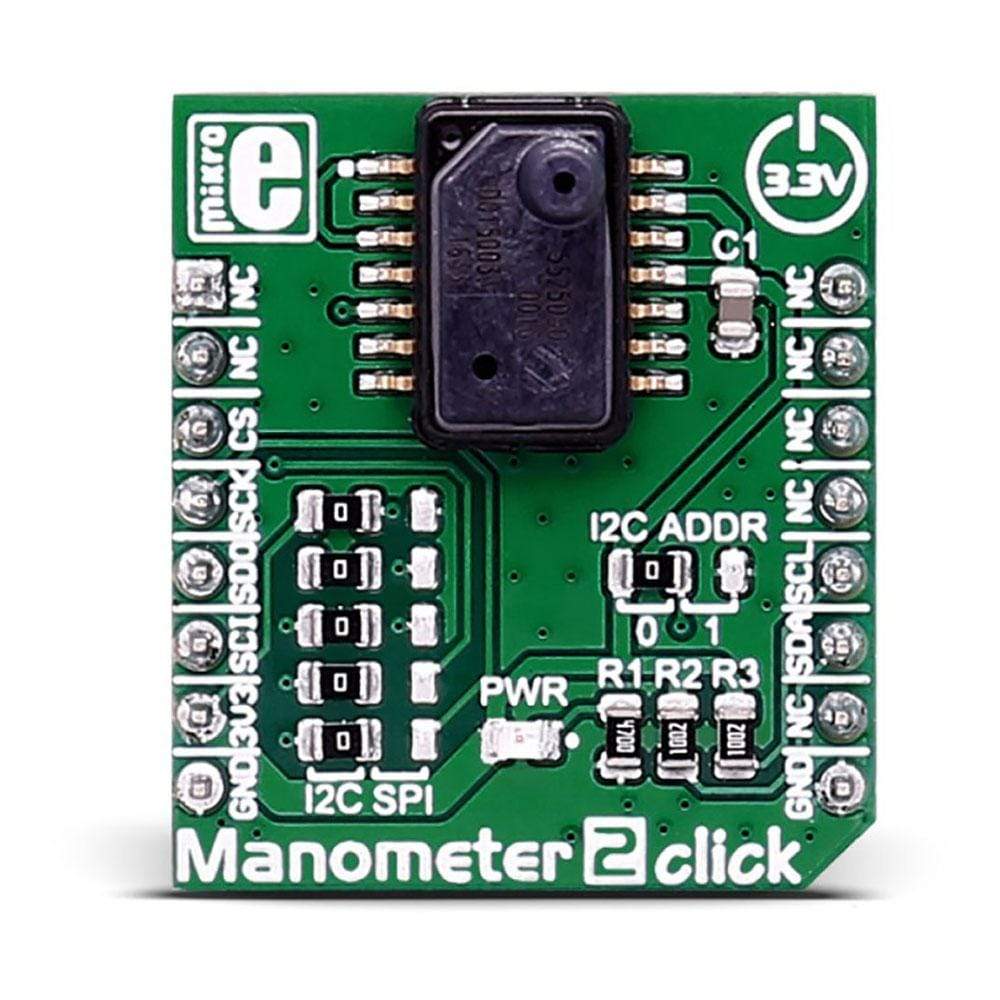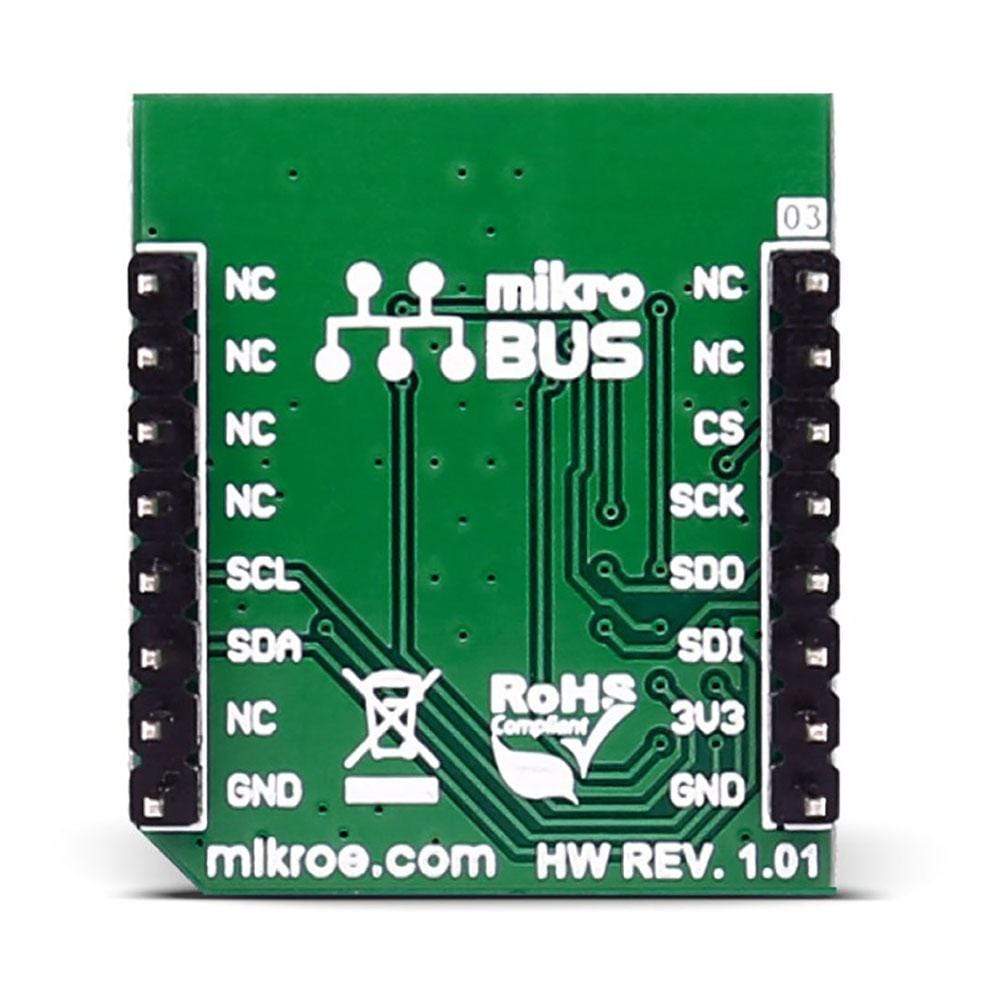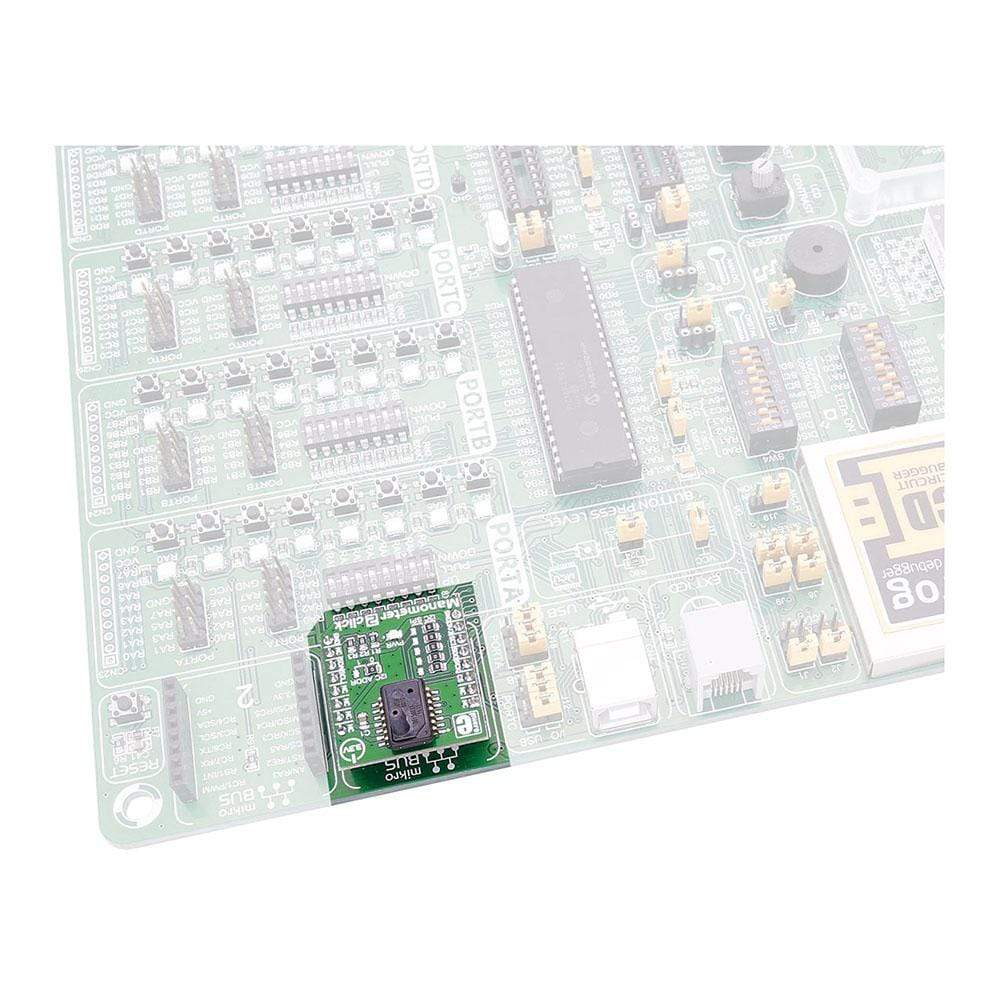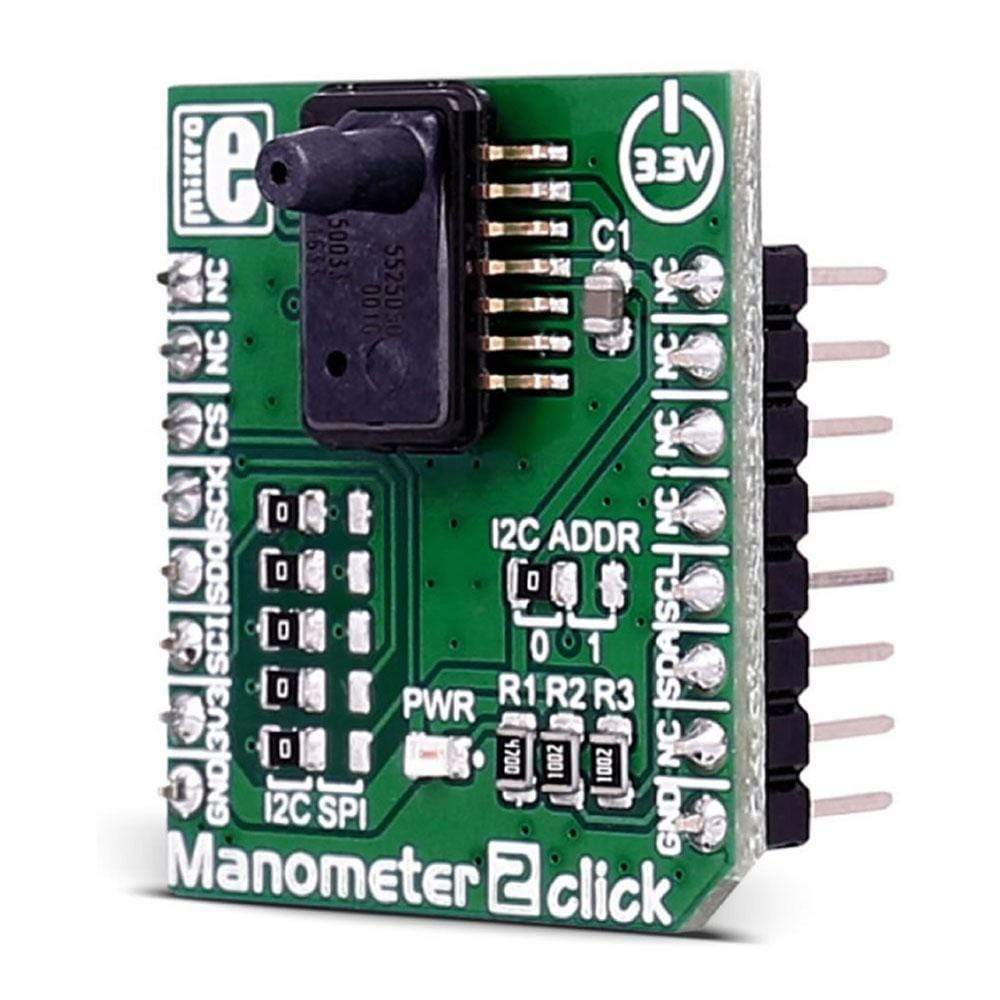
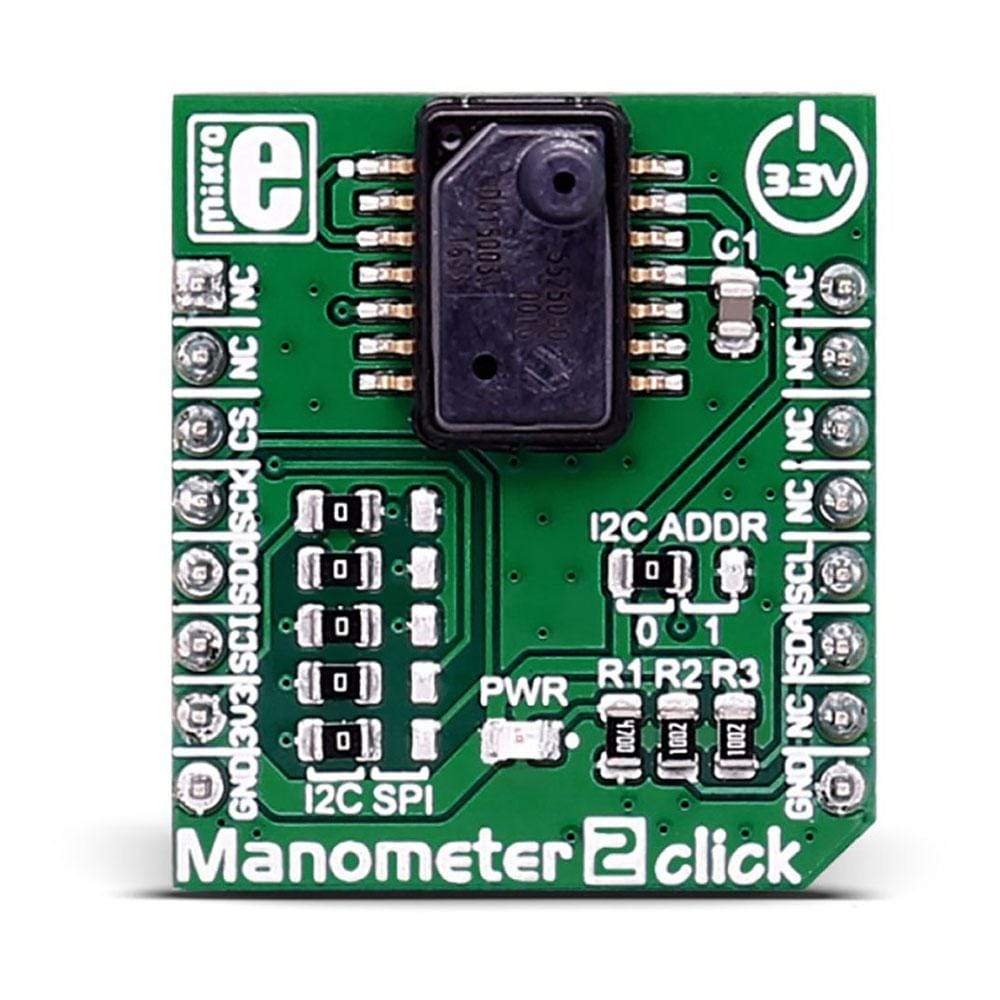
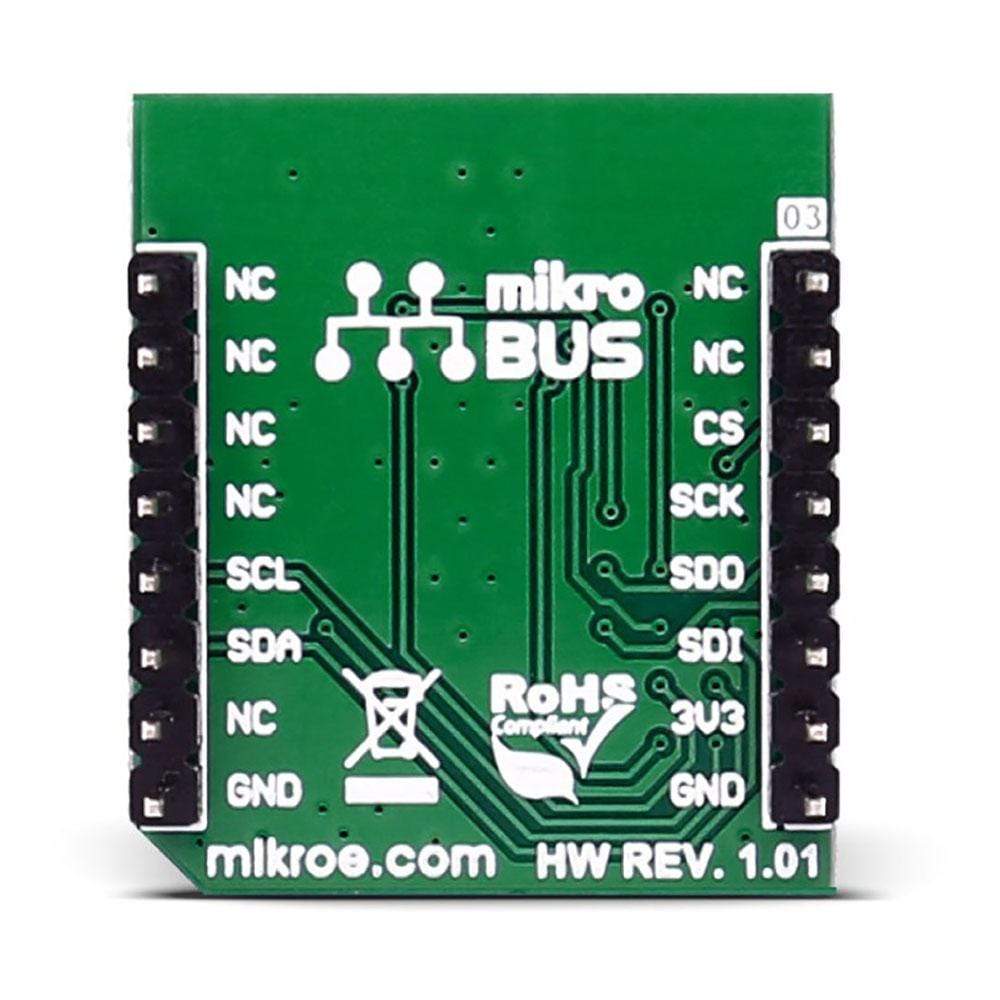
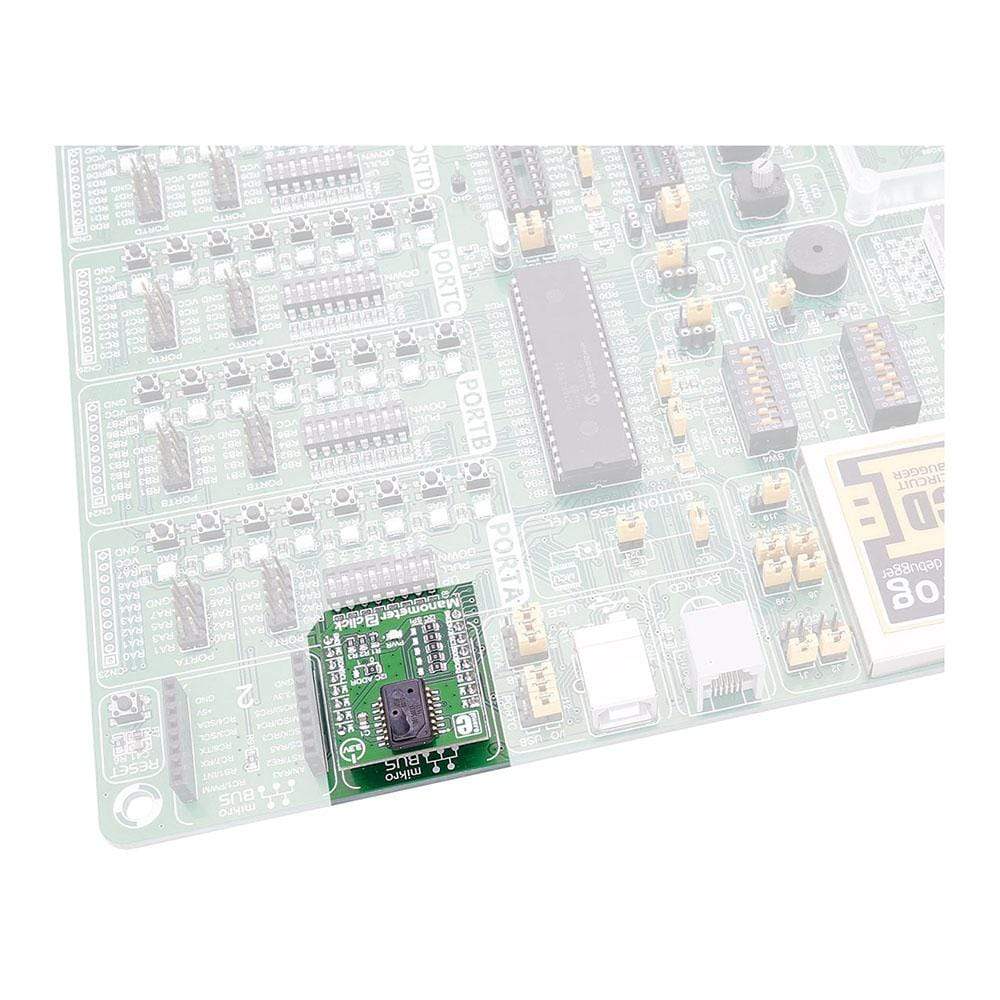
Overview
The Manometer 2 Click Board™ is based on the MS5525DSO-SB001GS digital pressure sensor, based on leading MEMS technology. The Click Board™ is designed to run on a 3.3V power supply. It communicates with the target microcontroller over I2C or SPI interface.
Downloads
Le Manometer 2 Click Board™ est basé sur le capteur de pression numérique MS5525DSO-SB001GS, basé sur la technologie MEMS de pointe. Le Click Board™ est conçu pour fonctionner sur une alimentation 3,3 V. Il communique avec le microcontrôleur cible via une interface I2C ou SPI.
| General Information | |
|---|---|
Part Number (SKU) |
MIKROE-2550
|
Manufacturer |
|
| Physical and Mechanical | |
Weight |
0.018 kg
|
| Other | |
Country of Origin |
|
HS Code Customs Tariff code
|
|
EAN |
8606018710973
|
Warranty |
|
Frequently Asked Questions
Have a Question?
Be the first to ask a question about this.

